Primary 70 Oph A Luminosity (bolometric) 0.59 ± 0.02 L☉ Luminosity (bolometric) 0.13 ± 0.03 L☉ Magnitude 4.03 | Companion 70 Oph B Luminosity (visual, LV) 0.54 L☉ Luminosity (visual, LV) ~0.09 L☉ Rotation 20 days Apparent magnitude (V) 4.03 | |
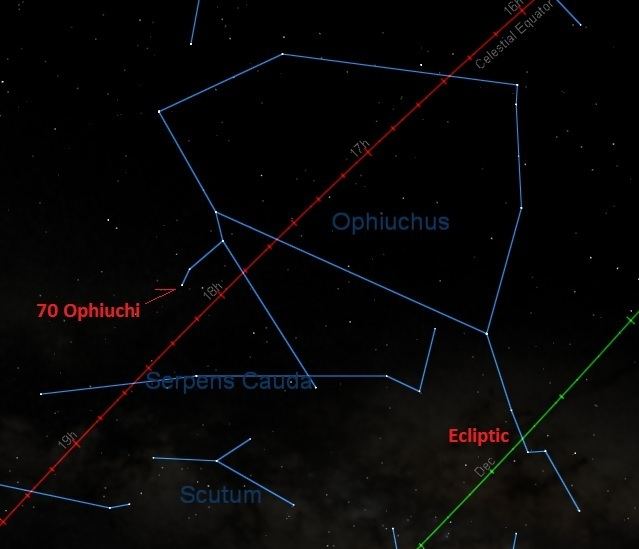 | ||
Similar RS Ophiuchi, Zeta Ophiuchi, 36 Ophiuchi, Rho Ophiuchi cloud co, Barnard's Star | ||
70 Ophiuchi is a binary star system located 16.6 light years away from the Earth. It is in the constellation Ophiuchus. At magnitude 4 it appears as a dim star visible to the unaided eye away from city lights.
Contents
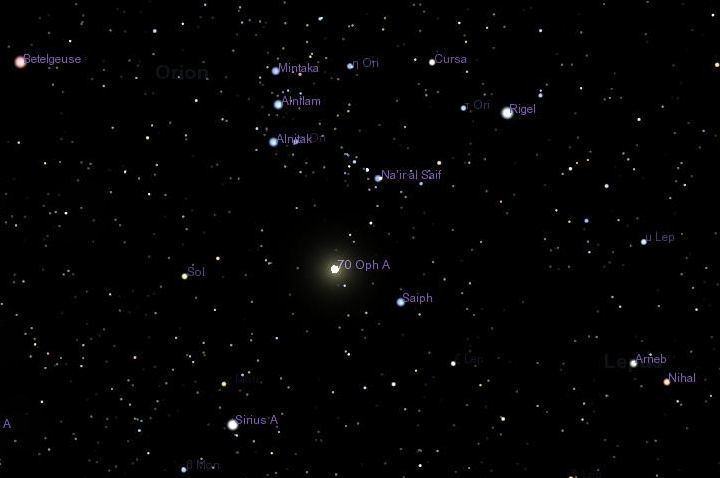
Binary star
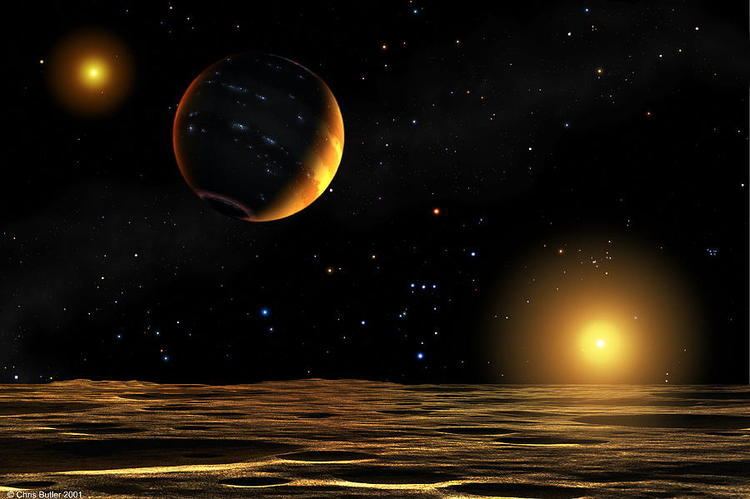
The primary star is a yellow-orange main sequence dwarf BY Draconis variable of spectral type K0, and the secondary star is an orange main sequence dwarf of spectral type K4. The two stars orbit each other at an average distance of 23.2 AUs. But since the orbit is highly elliptical (at e=0.499), the separation between the two varies from 11.4 to 34.8 AUs, with one orbit taking 83.38 years to complete.
History
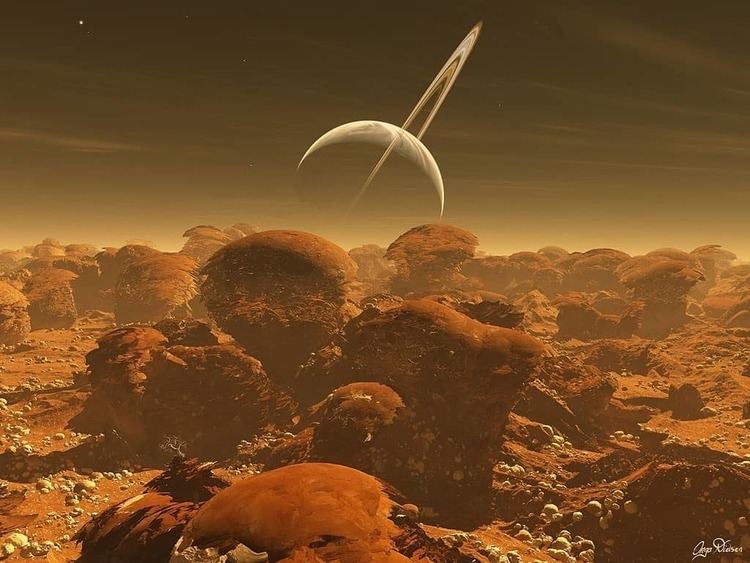
This star system was first cataloged by William Herschel in the late 18th century in his study of binary stars. Herschel proved that this system is a gravitationally bound binary system where the two stars orbit around a common center of mass. This was an important contribution to the proof that Newton's law of universal gravitation applied to objects beyond the solar system. He commented at the time that there was a possible third unseen companion affecting the orbit of the two visible stars.
Claims of a planetary system

In 1855, Capt. W. S. Jacob of the Madras Observatory of the East India Company claimed that the orbit of the binary showed an anomaly, and it was "highly probable" that there was a "planetary body in connection with this system". This is the first attempt to use radial velocity to detect an exoplanet, and the first based on astrometric evidence.
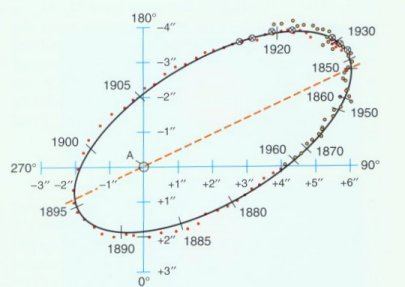
T. J. J. See made a stronger claim for the existence of a dark companion in this system in 1899, but Forest Ray Moulton soon published a paper proving that a three-body system with the specified orbital parameters would be highly unstable. The claims by Jacob and See have both been shown to be erroneous.
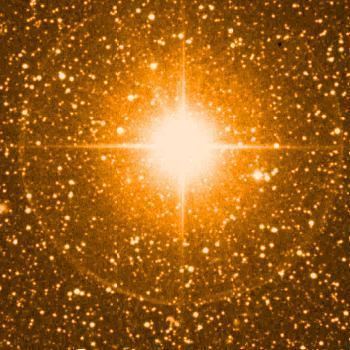
A claim of a planetary system was again made by Dirk Reuyl and Erik Holberg in 1943. The companion was estimated to have a mass one tenth the mass of the Sun. This caused quite a sensation at the time but later observations have gradually discredited this claim.
Refining planetary boundaries
The negative results of past studies does not completely rule out the possibility of planets. In 2006 a McDonald Observatory team has set limits to the presence of one or more planets around 70 Ophiuchi with masses between 0.46 and 12.8 Jupiter masses and average separations spanning between 0.05 and 5.2 AU.
